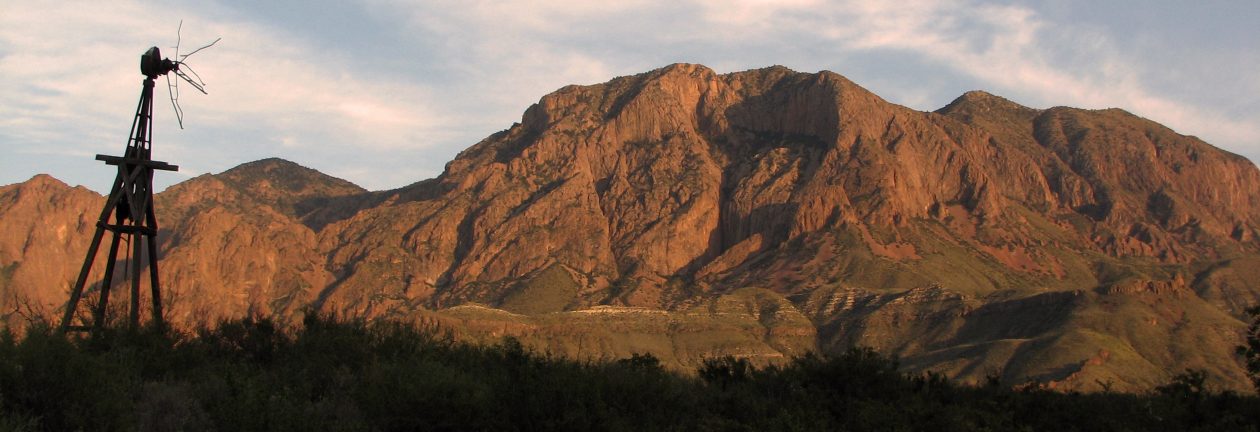Seoul, South Korea
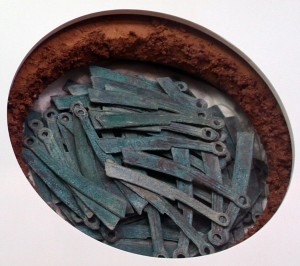
My first destination on this 23rd day in the merry month of May was the National Museum of Korea. I took the subway there and as is usual during the morning, when everyone is rushing to work or school, the subway was stuffed full of people, worse than a can of sardines. Luckily, I was able to press into this human stuffing and jouney south to the museum.
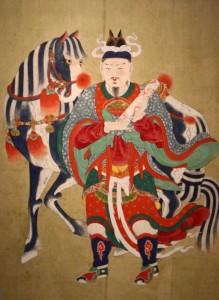
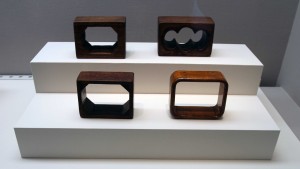
The museum is very large (the sixth largest in the world) and has a vast collection of artifacts from not only Korea, but East, Southeast, and Central Asia. During the four hours I spent there, I learned a lot about Korean history, from the Gojoseon period, to Three-Kingdoms (Goguryeo, Baekje, and Silla), to when the Silla kingdom unified the peninsula, the Later Three Kingdoms, the Goryeo Dynasty, and eventually to the famous Joseon Dynasty (which ruled from 1392-1910).
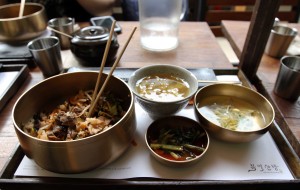
Luckily I finished viewing all the exhibitions before 13:00, the chosen time I was to meet my contact in Seoul – she was the sister of an acquaintance I had met in the United States before beginning my adventure. At 13:00 we (the contact, her friend, and I) met in front of the main entrance to the museum, boarded the subway, and headed to Namsan (“south mountain”) park. First we ate lunch, which was a beef, rice, and vegetable ensemble; I also had hot honey citron tea which was very soothing. We then took the cable car to the top of Namsan peak, where the world-recognizable Seoul Tower stands.
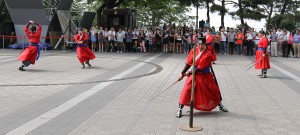
On top of the peak, we were fortunate enough to arrive in time to witness fighting demonstrations utilizing traditional Korean weapons. After the demonstrations, I was one of six chosen from the crowd to test my skill at thrusting a Janchang (“long spear”) into a bamboo stalk. My aim was dead on (thank God), I hit the bamboo stalk, tipping it, but I did not apply anywhere near the necessary power to slice all the way through the stalk, as the professional fighter effortlessly demonstrated.
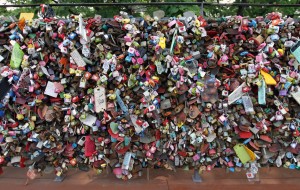
After the swords show, we wandered around the tower, which has many, many sealed locks with love notes scribbled on them. Lovers in Korea come to this mountain on dates, and as a sign of their everlasting bond, seal a lock together and write a note on it. It’s a beautiful concept, but of course the statistics tell us that most of these puppy loves don’t last; though it must be an interesting walk down memory lane for matured Koreans to look back at their multiple loves forever locked on this mountaintop.
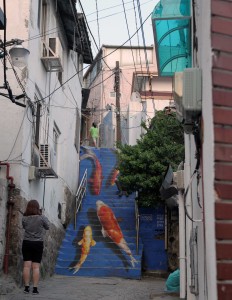
Once the romantic stroll was complete I had a beer. We then took a bus to Sungnyemun gate and then walked to Namdaemun market to see the plethora of goods available for purchase. While in the market, I had some blackberries, fried lotus root, a corn dog fried with french fries (I can’t believe this fattening treat hasn’t made it to America yet), and some egg bread (corn bread with fried egg on top). We then took the subway to Naksan park where we viewed many fine examples of street art, ate a spicy seafood dinner, and then all enjoyed beer and shikhye (a Korean beverage made from fermented rice) at the top of Naksan mountain.
Note: Naksan mountain is associated with the Blue Dragon, which is the eastern protector (Naksan mountain lies to the east of Seoul); Namsan mountain is associated with the Red Phoenixes, the southern protector; Inwangsan mountain is associated with the White Tiger, the western protector; Bugaksan mountain is associated with the Black Turtle, the northern protector. The capital of the Joseon Dynasty was chosen in this area, where present-day Seoul lies, because of the four mountains, as well as other rules of Geomancy.

